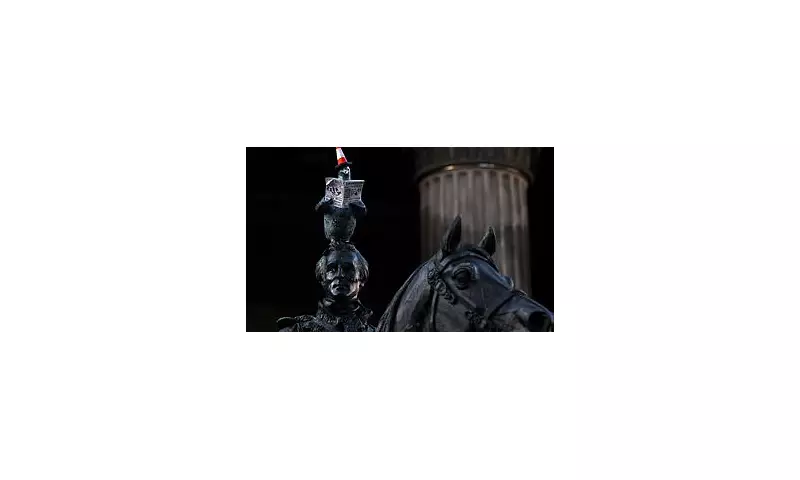
One of Glasgow's most beloved and quirky landmarks has received an unexpected artistic intervention that has captured the city's imagination. The famous Duke of Wellington statue outside the Gallery of Modern Art, long known for its traffic cone headwear, has been temporarily transformed by the mysterious street artist known as Rebel Bear.
A Surprise Makeover for an Icon
For more than four decades, Glaswegians have maintained the unofficial tradition of placing a traffic cone on the head of the equestrian statue, creating what has become an iconic must-see landmark for tourists. However, visitors were treated to a different sight yesterday when the statue's customary headgear was replaced with something entirely novel.
The artist, who has been dubbed the 'Scottish Banksy', has perched a miniature statue of a pigeon reading a newspaper atop the Duke's head. The bronze-coloured pigeon itself sports a tiny traffic cone, maintaining the spirit of the tradition while adding a new layer of humour and commentary.
The Artist's Statement
Rebel Bear shared photographs of the installation online with the caption: 'The dignified and undignified beasts. Located: well, youse know where.' The newspaper being read by the pigeon, titled 'The Daily Dropping', features both news and sports sections with headlines including 'Seagull Gang Caught' and 'Park bench poop crisis deepens'.
In a clever nod to local culture, the sports section reveals that in a pigeon race, 'Cliffy Wins By A Beak'. This attention to detail has delighted locals and art enthusiasts alike, with many praising the work's wit and craftsmanship.
What This Means for Glasgow's Cultural Landscape
This artistic intervention represents the latest chapter in the ongoing story between Glasgow residents and the city's most famous statue. The Duke of Wellington statue has become a symbol of Glasgow's irreverent sense of humour and creative spirit, with authorities eventually ceasing their long battle to keep the cone off the statue.
Rebel Bear's work continues a proud tradition of street art in Scotland's largest city, adding another layer to Glasgow's vibrant urban art scene. While it's unclear how long the pigeon sculpture will remain in place, the installation has already generated significant discussion on social media and among visitors to the city centre.
The transformation demonstrates how public art can evolve while respecting local traditions, creating new conversations around familiar landmarks. As Glasgow continues to celebrate its status as a cultural hub, interventions like Rebel Bear's ensure that the city's artistic landscape remains dynamic and engaging for both residents and tourists.





